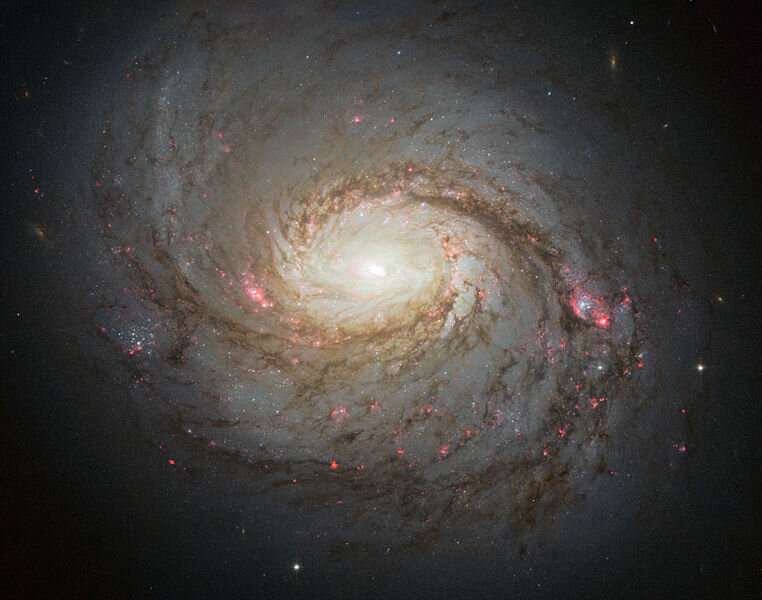Hubble image of NGC 1068. Credit: NASA/ESA/A. van der Hoeven.
A new study conducted by French astronomers has delivered new insights about central stellar population and gas outflow in the spiral galaxy NGC 1068. Results of the research, presented in a paper published May 22 on arXiv.org, could be essential in improving our knowledge about physical processes taking place in the inner region of this galaxy.
Located some 53 million light years away, NGC 1068 (also known as Messier 77 or M77) is a Syefert type 2 galaxy harboring a supermassive black hole (SMBH), a distinct narrow line region (NLR) and a strong, dusty source of infrared radiation hiding a Seyfert 1 nucleus. Due to its relatively close location and high luminosity of about several hundred billion solar luminosities, the galaxy has been a subject of numerous observations.
However, although many studies of NGC 1068 have been conducted to date, fundamental questions about its active galactic nucleus (AGN) remain unanswered. While many structures in the nuclear region of this galaxy have been revealed, still very little is known about the physical processes occurring in the AGN.
In order to answer these questions, a group of astronomers led by Pierre Vermot of Paris Observatory decided to conduct spectroscopic observations of the central region of NGC 1068, focusing on the characterization of the properties of stars, dust and gas and their spatial distribution. For this purpose they used the Spectro-Polarimetric High-contrast Exoplanet REsearch (SPHERE) of ESO's Very Large Telescope (VLT).
"In order to understand the physical processes taking place in the central region of NGC 1068 we performed a long-slit spectroscopy analysis of the nucleus in YJH bands (0.95—1.65 µm) at sub-arcsecond angular resolution (0.35")," the astronomers wrote in the paper.
Near-infrared observations conducted with SPHERE allowed the astronomers to decompose the observed continuum emission into four components: young stellar population (about 120 million years old), hot dust (with a temperature of around 800 K), scattered light from the hidden Seyfert 1 nucleus and a very hot stellar background. They also enabled the team to probe the gas physical conditions and its excitation mechanisms.
The study found that hot dust is the main contributor to the flux in the very central region of NGC 1068. However, scattered light is also significantly detected. Beyond this area, but also in the central region of the galaxy, the continuum emission is dominated by the stellar content containing an extended very hot stellar population.
Furthermore, the research found that emission lines exhibit a significant Doppler shift, suggesting that it could be due to a radial outflow from the nucleus in a biconical structure.
"A Doppler shift has been measured in several of those lines ([S II], He I, [P II], Pa β , leading to the conclusion that they are tracing the outflow originating from around the nucleus whose northern part is moving toward the observer and southern part away from it," the astronomers concluded.
The authors of the paper added that their study demonstrates the potential of near-infrared spectroscopic observations in studying Seyfert 2 nuclei. They hope that further investigation of NGC 1068 with SPHERE will help them get a full picture of the processes in the galaxy's central region.
More information: Pierre Vermot et al. New insights on the central stellar population and gas outflow in NGC 1068 from YJH spectroscopy with SPHERE/VLT. arXiv:1905.09208v1 [astro-ph.GA]: arxiv.org/abs/1905.09208
© 2019 Science X Network
























